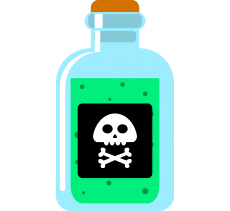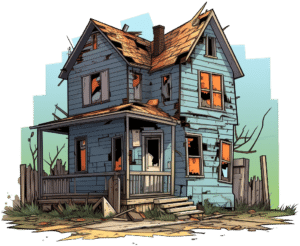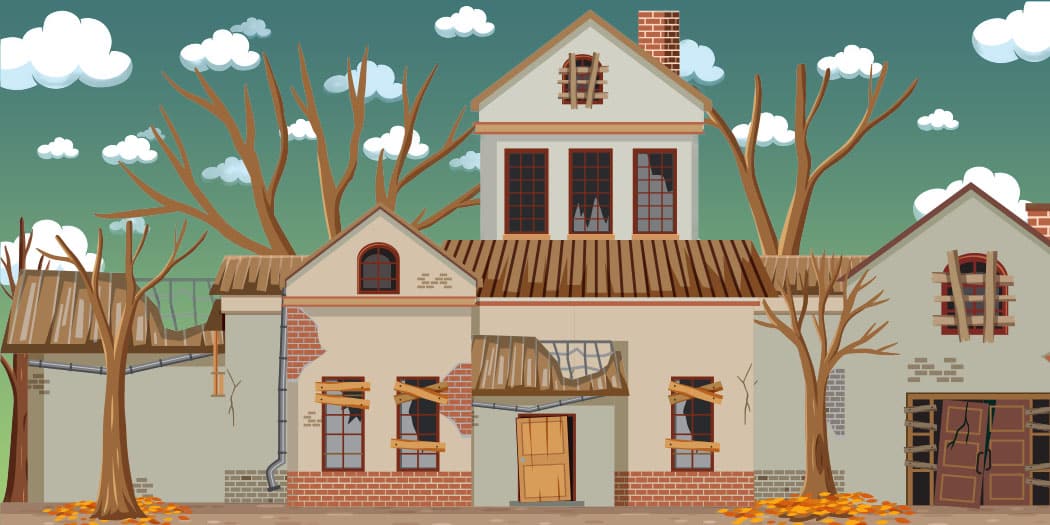Key Points
The Structure
The Inside
Your Neighbor's Behavior

You’d be surprised to hear that meth labs, especially home or DIY ones, are not that easily distinguishable. Meth labs are commonly found in poor rural areas remote from busy towns where cop surveillance is low. Technically, however, operational labs can exist anywhere, including suburban and yes, even upper-class neighborhoods.
If you suspect that one of your neighbors is running an undercover drug lab, you may rightfully wonder what signs might legitimately help you recognize them. Thankfully Bio Recovery, the nationwide meth lab decontamination and cleanup professionals is here to provide clarity. We’ve seen hundreds of meth houses in their 20 years of experience and can provide some valuable tips and advice.
#1 The Structure
As we said, it’s not always straightforward to determine if it’s a drug lab based on the outside of the structure. Again, most situations affect rural areas, so these stereotypical characteristics of a house all do offer considerable concerns:
- Boarded windows
- Unupdated structure
- Missing siding or exposed wood/brick
The issue is, what if the house is located in a nice neighborhood in a house that appears to be maintained well? Well, you should be on the lookout for:
- Strange ventilation. We’ve seen basement windows left open or opened at inappropriate times, like after snowstorms or during subfreezing weather. We’ve also seen jerryrigged ventilation systems made of materials like pipes extruding from strange areas of the home (i.e. basement).
- Burn pits: DIY mixers will use the yard in suspicious ways, especially to dump toxic or contaminated byproducts that they don’t use. Be on the lookout for isolated areas that are black or browning–almost as if the grass has been burned or a fire has been put out.
- Unusual trash or litter: If the yard or garbage has extracted lithium batteries, bulk amounts of empty over-the-counter cold medicine packaging, or empty chemical containers (e.g. antifreeze, Freon, drain opener, paint thinner, etc.). The yard may also have soda bottles with clear tubes coming out of a cut hole at the top–especially if the person used the highly dangerous “shake and bake” method to cook their meth.
- Pungent, noticeable odors: Very strong odors that resemble ammonia or ether have been linked to cooking meth, and reasonably so. The cat urine-smelling gas ammonia is one of the active ingredients in meth–and of course, has been used in its production.
A recap: if the building looks sketchy–if the structure looks condemned but is drawing a lot of sketchy foot traffic, definitely consider it a red flag. If the house looks nice and modern in addition to all of these signs together? It’s another red flag. Be sure to document everything and report the situation to the police (you may do so anonymously).
#2 You Live in the Building and Suspect Something's "Off"
You may be surprised to hear that you can live in a meth home without ever knowing. In fact, it happens all the time, especially when a home of a former lab is purchased unknowingly. We’ve also seen tenants discover smaller scale “shake-and-bake” labs in their building, running in secrecy.
We pray you’re never in a situation as dangerous as visiting or unknowingly living in a meth home. The residue left by the fumes blankets walls and rooms in microscopic trails and you may come in contact without ever knowing. Others can form suspicions after developing rashes, itches, allergic reactions, or more. If you’ve having this type of reaction after purchasing the home, settle your doubts by contacting the nationwide licensed and insured Bio Recovery professionals for a meth lab test.
You can’t control what others do, or what they do behind closed doors. Therefore, if you live in an apartment complex or building, you’ll want to familiarize yourself with signs that a drug lab may be operating in your building.
Apart from the unusual odor (which we covered earlier), look for signs of:
- Lack of cleanliness/odd building decay. A drug lab emits strong, powerful chemicals, and due to the nature of the operation, ventilation can be intentionally poor or sketchy, which places a greater burden on the home. Yellowing or burnt paneling, faulty electricity, suspicious odors. In general, producers of methamphetamine may also be users as well, thus a lack of cleanliness is common as well. Look for rats, mice, pests, dirty floors, poor hygiene, or concerning appearance in neighboring tenants.
- Hoarding of mass amounts of supplies and ingredients: cold from over the counter medication to lithium batteries to other chemical ingredients such as hydrogen peroxide, ether, and ammonia. Stray coffee filters that have unusual stains on them may also be indicative of a meth problem.
- Random smoking pipes or paraphernalia: beyond crack pipes you may also be surprised to find drink bottles in the home or building with hoses fed through the top of them. We’ve also seen camping fuel containers with holes punched on the sides or the bottom.
If you’re in an apartment building or complex, document all of these signs and immediately bring them to the attention of the property manager.
If this is a home you’ve recently purchased, vacate the premises and contact a Bio Recovery specialist immediately to have your home tested and decontaminated.
#3 Your Neighbor's Demeanor
Depending on their level of use, where they use, or how they behave, there may be a level of discretion involved in their behavior. You may not see paraphernalia or structural damage from inside the building, though it could still be in plain sight elsewhere. In other cases you’ll want to look for clues in your neighbor’s behavior. When they may have a problem or manufacturing methamphetamines they can appear:
- Paranoid
- Extremely reclusive (which is why you may remain unaware of their private problem)
- Strange visitor activity: when you notice many different guests at all hours of the night, it may be indicative of a drug den or several dealings. Remain vigilant.
- Burning garbage. As a part of their paranoia or to legitimately eliminate the traces of their trail, methheads or producers have been known to burn their garbage in places of the building. If you don’t catch them doing this, look for suspicious behavior of carrying their garbage to dump it off premises.
What To Do With a Contamination
It’s natural to feel alarmed when you suspect a contamination may be affecting you. The best thing you can do in these types of situations is to photograph, document, remain calm the best you can, and report the situation to the housing authorities. If you own the home you will want to work with a professionally licensed meth contamination crew and call them immediately.
Don't Attempt It Yourself
We’re the folks you want to talk to. Having been in the methamphetamine lab decontamination industry for over 20 years, Bio Recovery has the experience and licensing required to effectively respond to these situations. Give us a call immediately if you’re in this situation.
Share this Post
